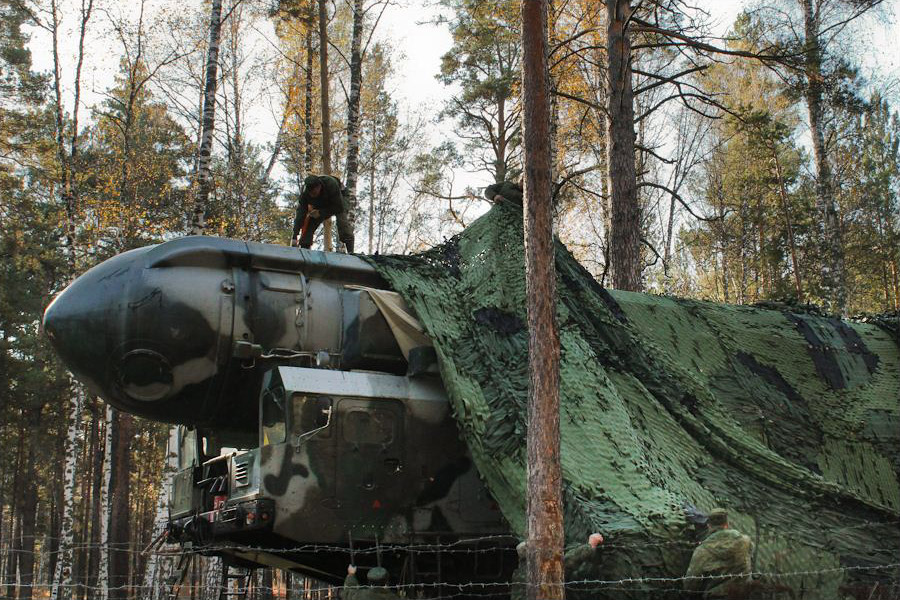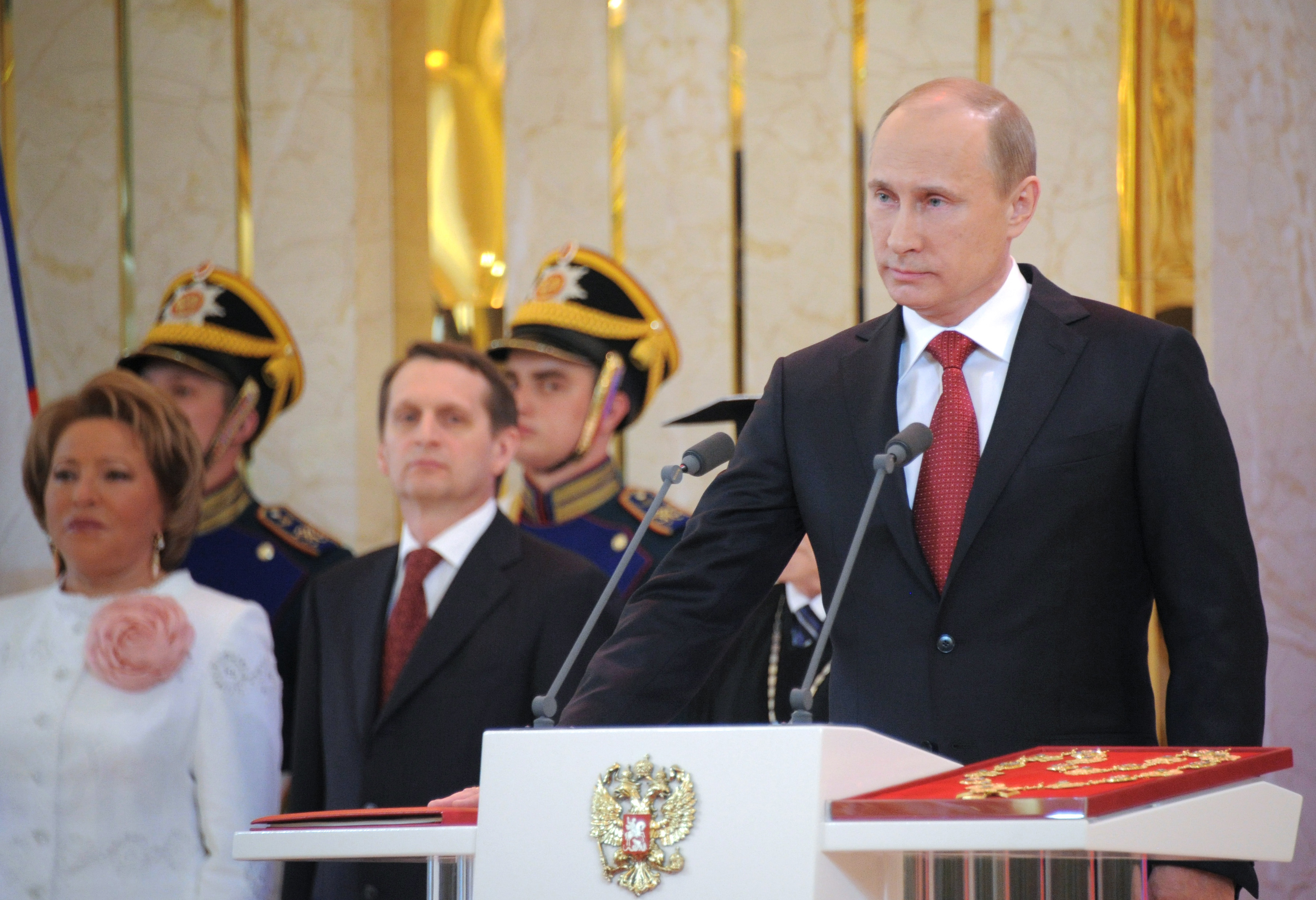|
Sibirsky, Altai Krai
Sibirsky (russian: Сиби́рский) is a closed rural locality (ZATO) in Altai Krai, Russia, located from Barnaul, the administrative center of the Krai. As of the 2010 Census, its population was 11,306. Sibirsky is home to the 35th Red Banner Order of Kutuzov and Alexander Nevsky Rocket Division of the Strategic Missile Troops. The status of ZATO was given by a decree of the President of the Russian Federation on November 23, 1995. History The history of the settlement begins in 1979, when the commander-in-chief of the rocket forces, at that time, General of the Army, and then Chief Marshal of Artillery, Vladimir Fedorovich Tolubko, decided to deploy a military facility near Tsaplino station. Construction began in 1980; the first inhabitants lived in trailers and tents. In 1982, work was carried out on the construction of residential buildings, as well as barracks and special structures, in order for the first missile regiment to be put on duty in a tim ... [...More Info...] [...Related Items...] OR: [Wikipedia] [Google] [Baidu] |
Altai Krai
Altai Krai (russian: Алта́йский край, r=Altaysky kray, p=ɐlˈtajskʲɪj kraj) is a federal subjects of Russia, federal subject of Russia (a krai). It borders clockwise from the west, Kazakhstan (East Kazakhstan Region and Pavlodar Region), Novosibirsk Oblast, Novosibirsk and Kemerovo Oblasts, and the Altai Republic. The krai's administrative centre is the types of inhabited localities in Russia, city of Barnaul. As of the Russian Census (2010), 2010 Census, the population of the krai was 2,419,755. Name The region is named after the Altai mountains. In Russian, Altai Krai means the Altai region. Geography Altai Krai has rolling foothills, grasslands, lakes, rivers, and mountains. The highest point of the krai is high Mayak Shangina. The climate is severe with long cold dry winters and hot, usually dry summers. The region's main waterway is the Ob River, which gives its name to the Ob Plateau. The Biya River, Biya and Katun Rivers are also important. Th ... [...More Info...] [...Related Items...] OR: [Wikipedia] [Google] [Baidu] |
35th Rocket Division
The 35th Red Banner Orders of Kutuzov and Aleksandr Nevsky Rocket Division (russian: 35-я ракетная Краснознамённая, орденов Кутузова и Александра Невского дивизия) is a strategic missile division of the Strategic Rocket Forces of Russia. Part of the 33rd Guards Rocket Army, the division is based in the closed settlement (''ZATO'') of Sibirsky, near Barnaul, Altai Krai. History The unit was created in 1942 as 21st Light Artillery Brigade of the Reserve of the Supreme High Command in the settlement of Rublyovo (a part of Moscow). It was part of the 6th Artillery Division of the 5th Army (Soviet Union), 5th Army and included the 200th Red Banner Pomeranian, 1171st and 1314th Artillery Regiments. The brigade took part in World War II. Beginning its combat operations near the town of Zhizdra, the brigade passed through Mazyr, Mozyr, Kalinkavichy, Kalinkovichi, Karachev, Gomel, Minsk, Warsaw, Berlin, and ended the w ... [...More Info...] [...Related Items...] OR: [Wikipedia] [Google] [Baidu] |
Administrative Divisions Of Altai Krai ...
Administrative and municipal divisions References {{Use mdy dates, date=October 2013 Altai Krai Altai Krai Altai Krai (russian: Алта́йский край, r=Altaysky kray, p=ɐlˈtajskʲɪj kraj) is a federal subjects of Russia, federal subject of Russia (a krai). It borders clockwise from the west, Kazakhstan (East Kazakhstan Region and Pavlodar ... [...More Info...] [...Related Items...] OR: [Wikipedia] [Google] [Baidu] |
Subdivisions Of Russia
Russia is divided into several types and levels of subdivisions. Federal subjects Since 30 September 2022, the Russian Federation has consisted of eighty-nine federal subjects that are constituent members of the Federation.Constitution, Article 65 However, six of these federal subjects—the Republic of Crimea, the Donetsk People's Republic, the Russian occupation of Kherson Oblast, Kherson Oblast, the Luhansk People's Republic, Lugansk People's Republic, the federal cities of Russia, federal city of Sevastopol and the Russian occupation of Zaporizhzhia Oblast, Zaporozhye Oblast—are internationally recognized as part of Ukraine. All federal subjects are of equal federal rights in the sense that they have equal representation—two delegates each—in the Federation Council of Russia, Federation Council (upper house of the Federal Assembly of Russia, Federal Assembly). They do, however, differ in the degree of autonomous area, autonomy they enjoy. De jure, there are 6&n ... [...More Info...] [...Related Items...] OR: [Wikipedia] [Google] [Baidu] |
Chief Marshal Of The Branch
Chief marshal of the branch (russian: Главный маршал рода войск, Glavny marshal roda voysk) was a senior military rank of the Soviet Armed Forces. It was immediately above the rank of Marshal of the branch. Both ranks were equal to general of the army. History The ranks of chief marshal of aviation, artillery, armoured troops, engineer troops, and signals were established on 27 October 1943. The three former branches had already had (since 4 February 1943) the corresponding ranks of marshal; in the two latter branches the ranks of marshal and of chief marshal were established simultaneously. When the rank of chief marshal was established, the size of the shoulder board's stars for all marshals except the rank of Marshal of the Soviet Union were made about 10mm smaller, and for chief marshals, the star was surrounded by a laurel wreath. On the uniform tie, chief marshals wore the marshal's star of the 2nd level. During the next forty years, the ranks of chie ... [...More Info...] [...Related Items...] OR: [Wikipedia] [Google] [Baidu] |
Army General (Russia)
Army general (russian: Генера́л а́рмии, Generál ármii) is the second highest military rank in Russia, inferior only to a marshal and superior to a colonel general. It is a direct counterpart of the Soviet Army General rank. At present it is also the highest rank in the air force, artillery, aerospace defense forces, armored troops, engineer troops and signal troops, unlike the Soviet Union where similarly ranked officers were called marshals and chief marshals of a branch. The corresponding naval rank is admiral of the fleet. On appointment as Defence Minister on 7 May 1992, Pavel Grachev was the first officer to be promoted to this rank. Vladimir Yakovlev was promoted to this grade while serving as commander of the Strategic Missile Forces (1997–2001). Rank insignia Since 2013, the rank insignia has been one big star and the army emblem on straps which was also used until 1997, as in the Soviet Army since 1974. Between 1997 and 2013, the rank insignia wa ... [...More Info...] [...Related Items...] OR: [Wikipedia] [Google] [Baidu] |
Soviet Union
The Soviet Union,. officially the Union of Soviet Socialist Republics. (USSR),. was a transcontinental country that spanned much of Eurasia from 1922 to 1991. A flagship communist state, it was nominally a federal union of fifteen national republics; in practice, both its government and its economy were highly centralized until its final years. It was a one-party state governed by the Communist Party of the Soviet Union, with the city of Moscow serving as its capital as well as that of its largest and most populous republic: the Russian SFSR. Other major cities included Leningrad (Russian SFSR), Kiev (Ukrainian SSR), Minsk ( Byelorussian SSR), Tashkent (Uzbek SSR), Alma-Ata (Kazakh SSR), and Novosibirsk (Russian SFSR). It was the largest country in the world, covering over and spanning eleven time zones. The country's roots lay in the October Revolution of 1917, when the Bolsheviks, under the leadership of Vladimir Lenin, overthrew the Russian Provisional Government ... [...More Info...] [...Related Items...] OR: [Wikipedia] [Google] [Baidu] |
President Of Russia
The president of the Russian Federation ( rus, Президент Российской Федерации, Prezident Rossiyskoy Federatsii) is the head of state of the Russian Federation. The president leads the executive branch of the federal government of Russia and is the commander-in-chief of the Russian Armed Forces. It is the highest office in Russia. The modern incarnation of the office emerged from the president of the Russian Soviet Federative Socialist Republic (RSFSR). In 1991, Boris Yeltsin was elected president of the RSFSR, becoming the first non Communist Party member to be elected into Soviet politics. He played a crucial role in the dissolution of the Soviet Union which saw the transformation of the RSFSR into the Russian Federation. Following a series of scandals and doubts about his leadership, violence erupted across Moscow in the 1993 Russian constitutional crisis. As a result, a new constitution was implemented and the 1993 Russian Constitution remains ... [...More Info...] [...Related Items...] OR: [Wikipedia] [Google] [Baidu] |
Strategic Rocket Forces
The Strategic Rocket Forces of the Russian Federation or the Strategic Missile Forces of the Russian Federation (RVSN RF; russian: Ракетные войска стратегического назначения Российской Федерации (РВСН РФ), Raketnye voyska strategicheskogo naznacheniya Rossiyskoy Federatsii, lit. 'Strategic Purpose Rocketry Troops') are a separate-troops branch of the Russian Armed Forces that control Russia's land-based intercontinental ballistic missiles (ICBMs). The Strategic Rocket Forces was created on 17 December 1959 as part of the Soviet Armed Forces as the main force intended for attacking an enemy's offensive nuclear weapons, military facilities, and industrial infrastructure. They operated all Soviet nuclear ground-based intercontinental, intermediate-range ballistic missile, and medium-range ballistic missile with ranges over 1,000 kilometers. After the Soviet Union collapsed in 1991, assets of the Strategic Rock ... [...More Info...] [...Related Items...] OR: [Wikipedia] [Google] [Baidu] |
Krai
A krai or kray (; russian: край, , ''kraya'') is one of the types of federal subjects of modern Russia, and was a type of geographical administrative division in the Russian Empire and the Russian SFSR. Etymologically, the word is related to the verb "" (''kroit'''), "to cut". Historically, krais were vast territories located along the periphery of the Russian state, since the word ''krai'' also means ''border'' or ''edge'', i.e., ''a place of the cut-off''. In English the term is often translated as "territory". , the administrative usage of the term is mostly traditional, as some oblasts also fit this description and there is no difference in constitutional legal status in Russia between the krais and the oblasts. See also * Krais of the Russian Empire * Krais of Russia * Governorate-General (Russian Empire), a general term for Krais, Oblasts, and special city municipalities in the Russian Empire *Oblast ;Foreign terms (in relation to the Russian "Krai") with similar ... [...More Info...] [...Related Items...] OR: [Wikipedia] [Google] [Baidu] |
City Of Federal Subject Significance
City of federal subject significance is an administrative division of a federal subject of Russia which is equal in status to a district but is organized around a large city; occasionally with surrounding rural territories. Description According to the 1993 Constitution of Russia, the administrative-territorial structure of the federal subjects is not identified as the responsibility of the federal government or as the joint responsibility of the federal government and the federal subjects."Энциклопедический словарь конституционного права". Статья "Административно-территориальное устройство". Сост. А. А. Избранов. — Мн.: Изд. В.М. Суров, 2001. This state of the matters is traditionally interpreted by the governments of the federal subjects as a sign that the matters of the administrative-territorial divisions are the sole responsibility of the fede ... [...More Info...] [...Related Items...] OR: [Wikipedia] [Google] [Baidu] |
Administrative Center
An administrative center is a seat of regional administration or local government, or a county town, or the place where the central administration of a commune A commune is an alternative term for an intentional community. Commune or comună or comune or other derivations may also refer to: Administrative-territorial entities * Commune (administrative division), a municipality or township ** Communes of ... is located. In countries with French as administrative language (such as Belgium, Luxembourg, Switzerland and many African countries), a (, plural form , literally 'chief place' or 'main place'), is a town or city that is important from an administrative perspective. Algeria The capital of an Algerian province is called a chef-lieu. The capital of a Districts of Algeria, district, the next largest division, is also called a chef-lieu, whilst the capital of the lowest division, the Municipalities of Algeria, municipalities, is called agglomération de chef-lieu (chef-lieu ... [...More Info...] [...Related Items...] OR: [Wikipedia] [Google] [Baidu] |





_(10004827914).jpg)